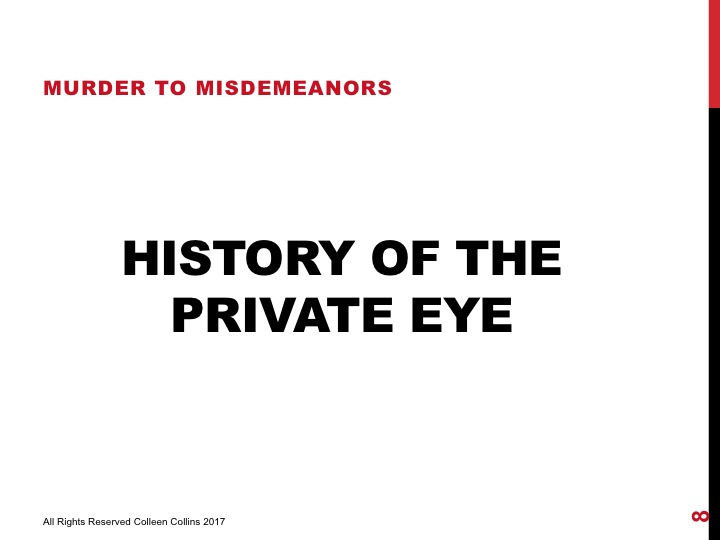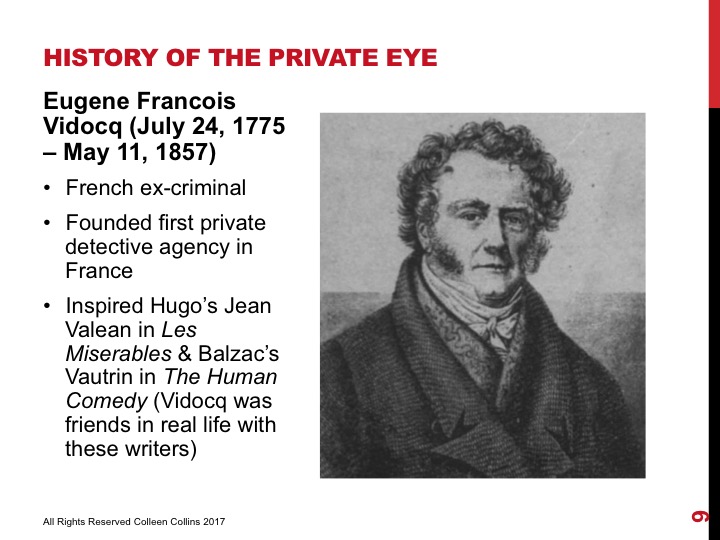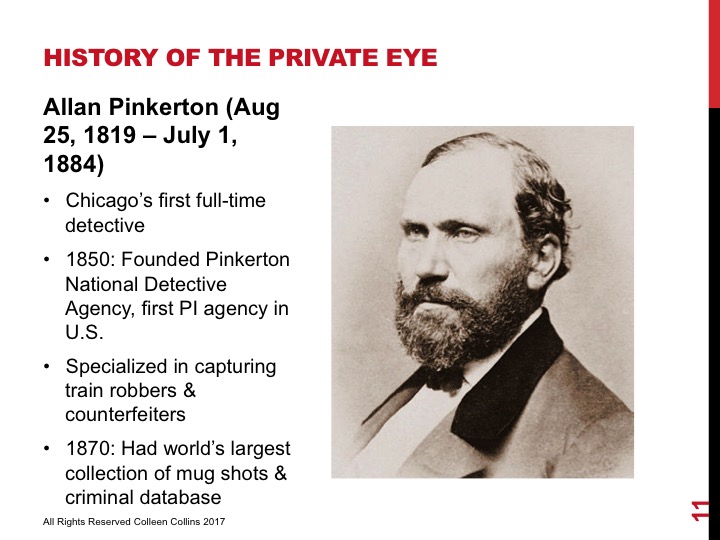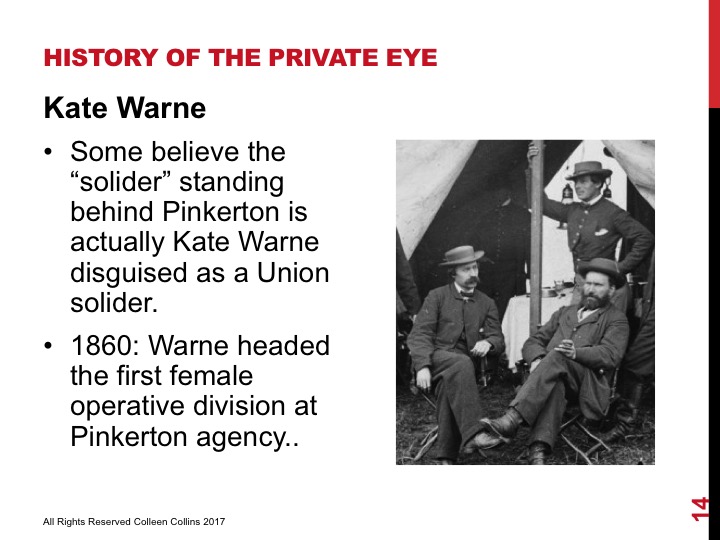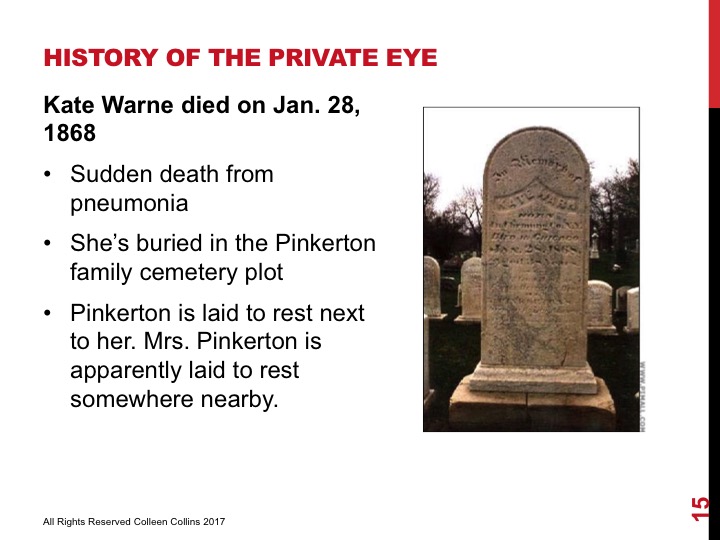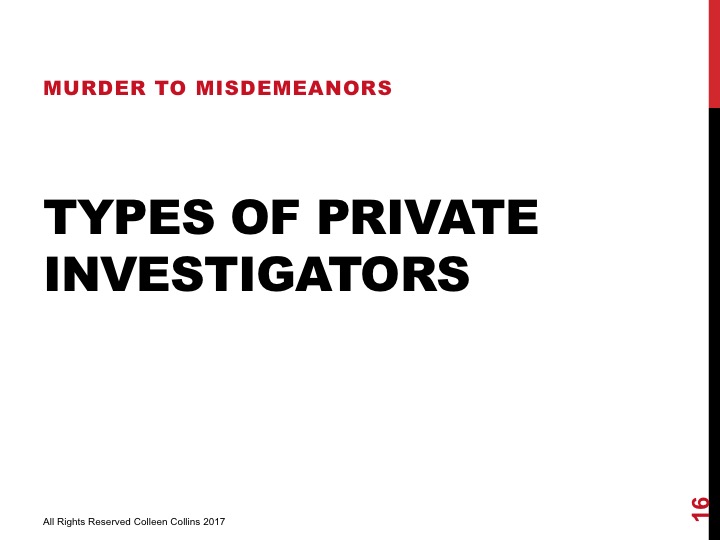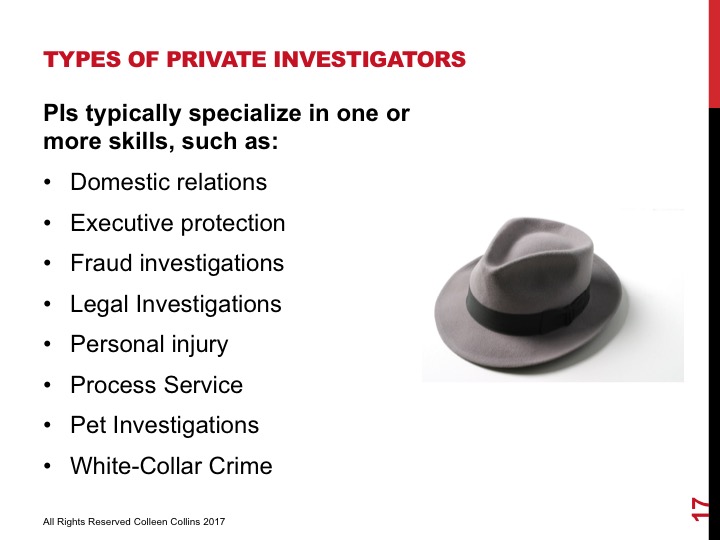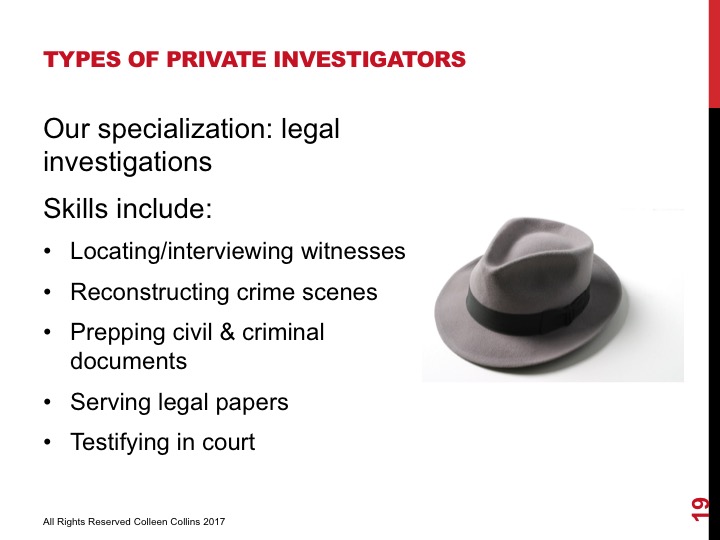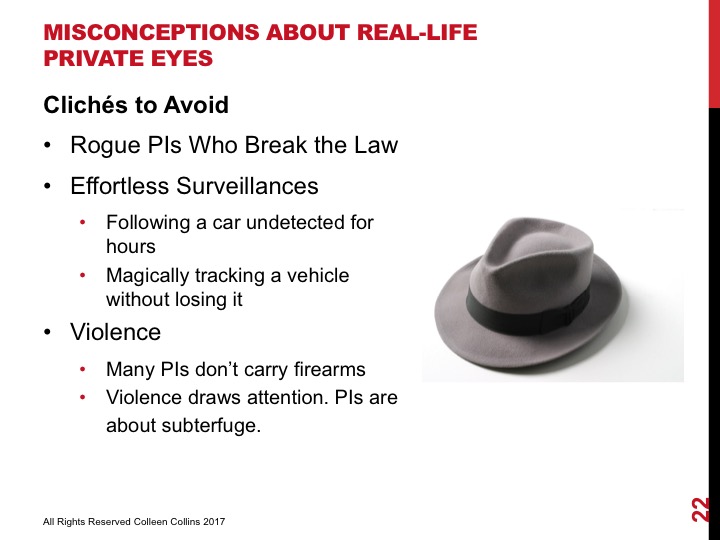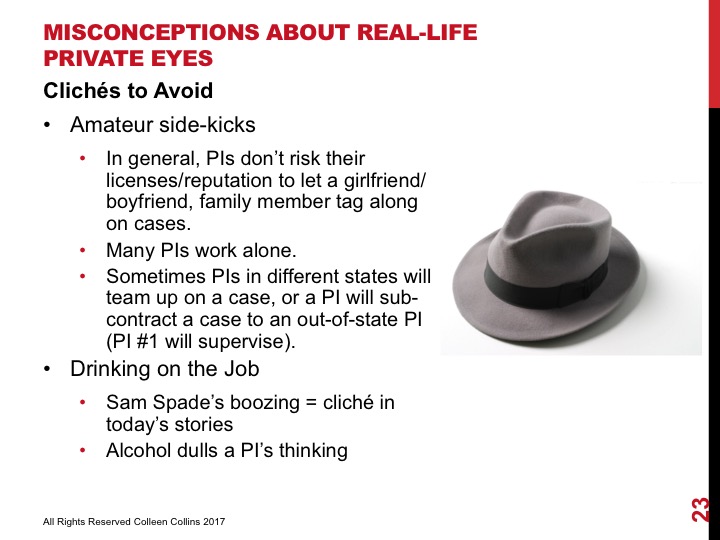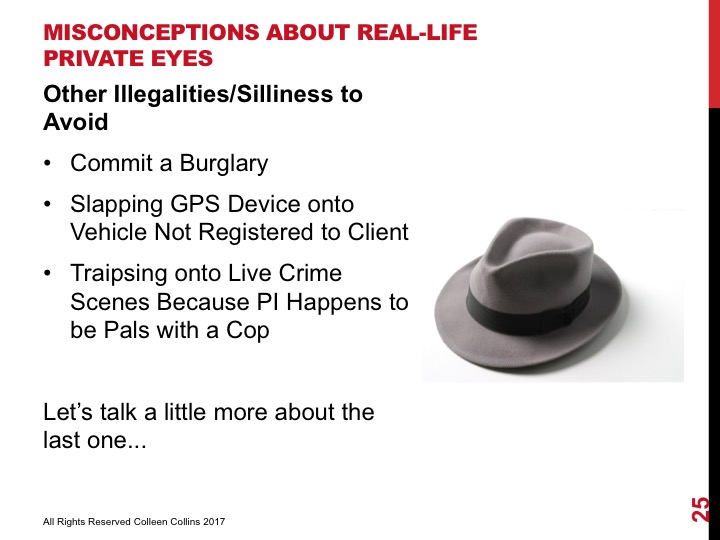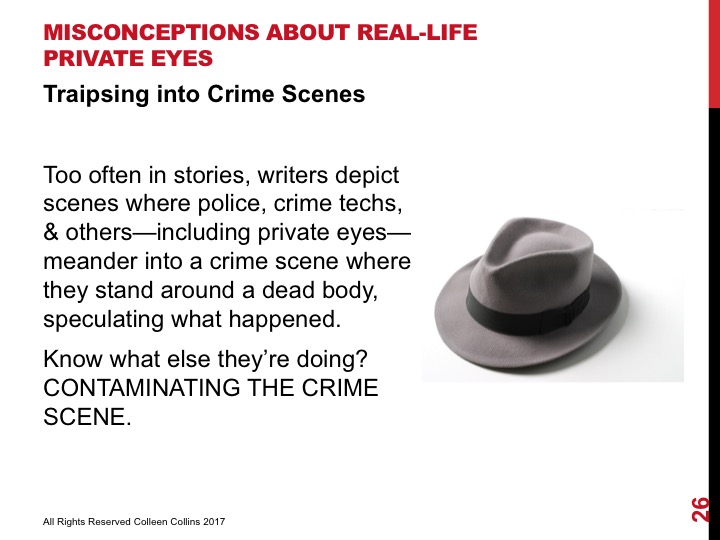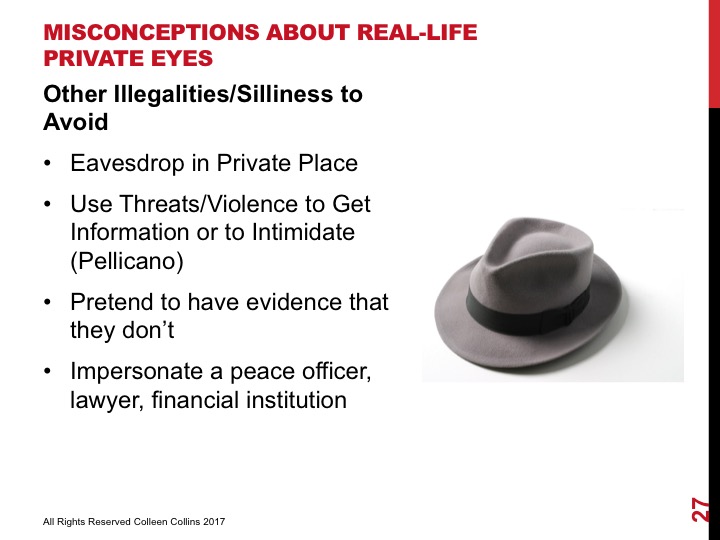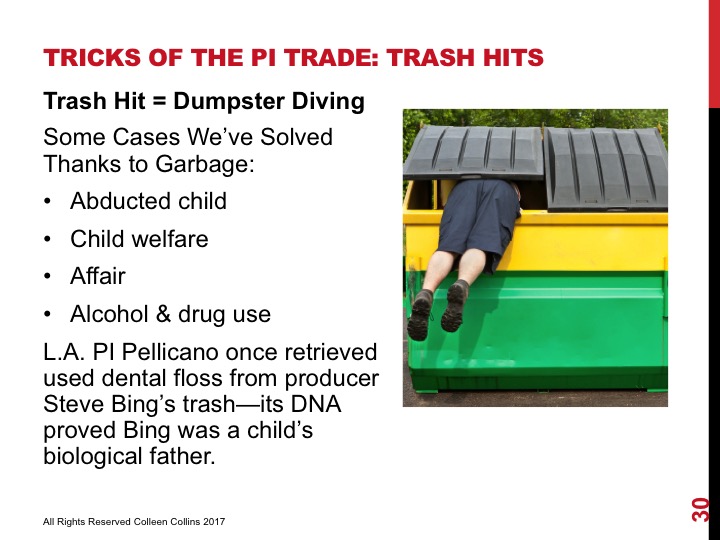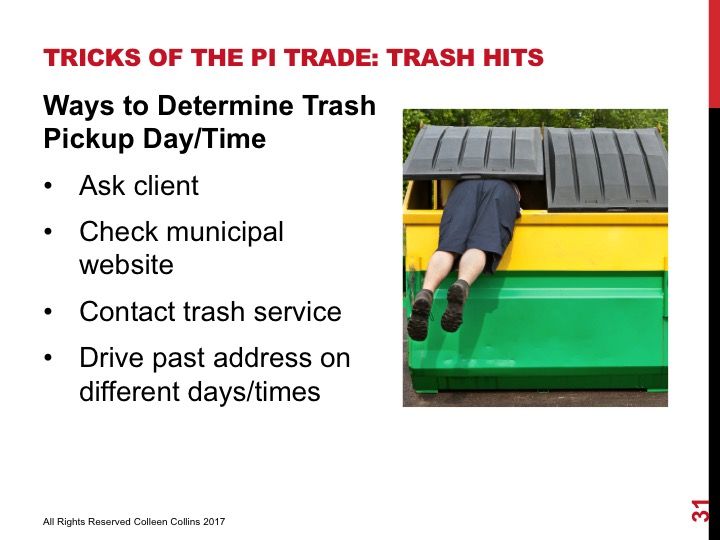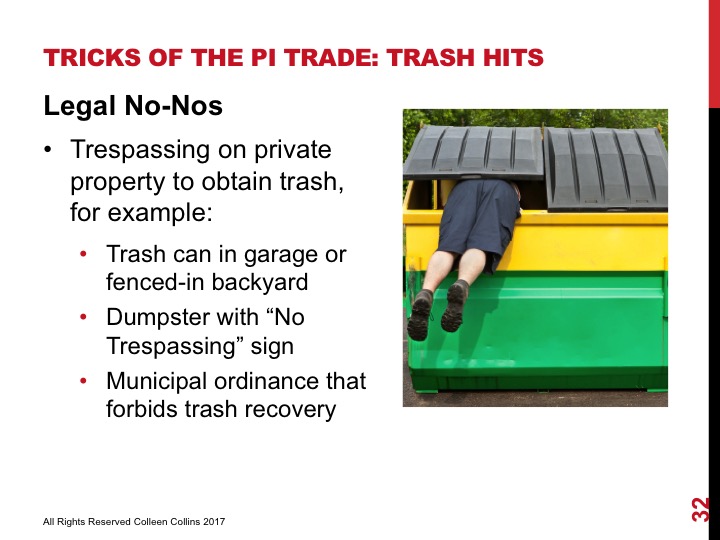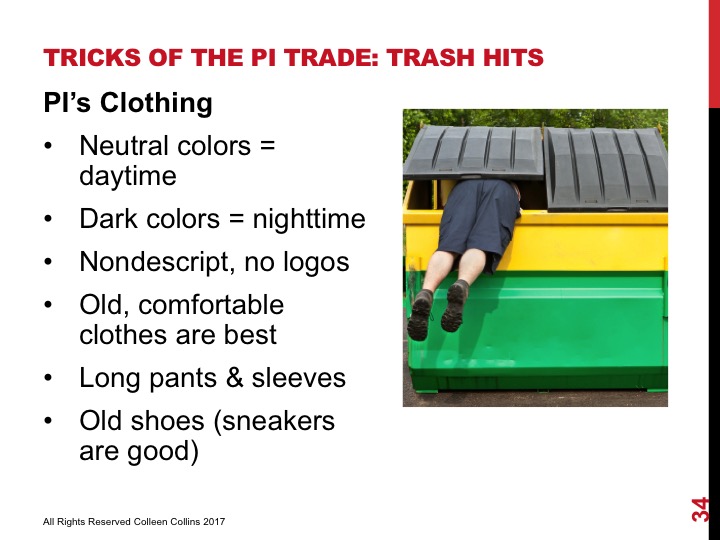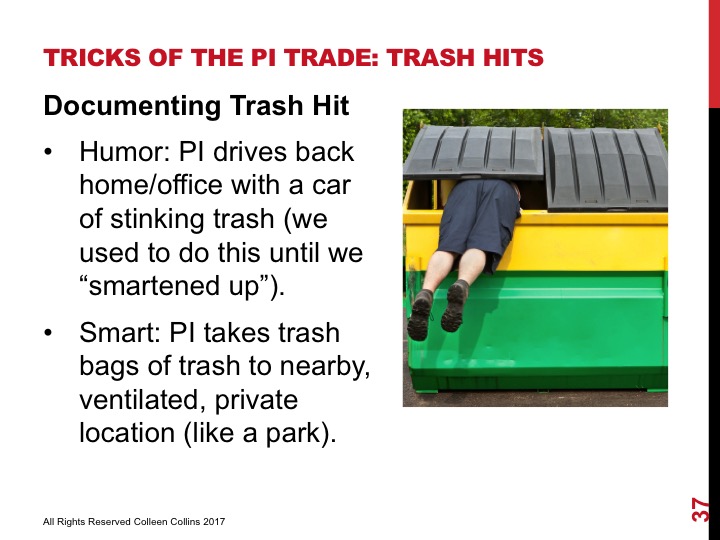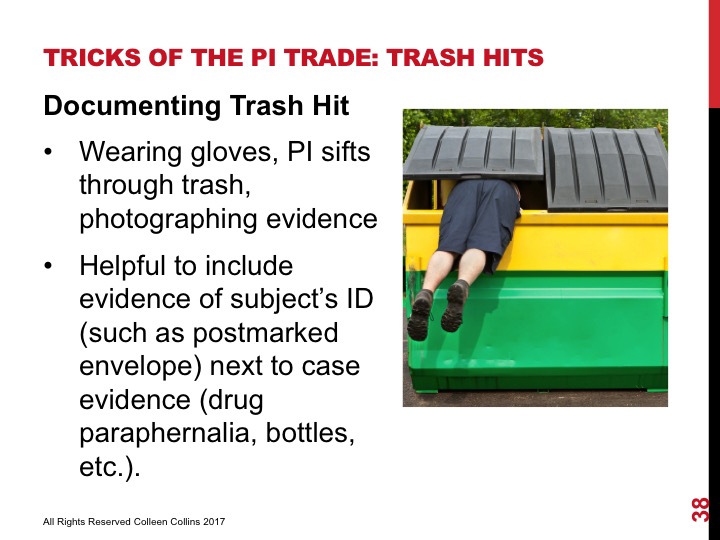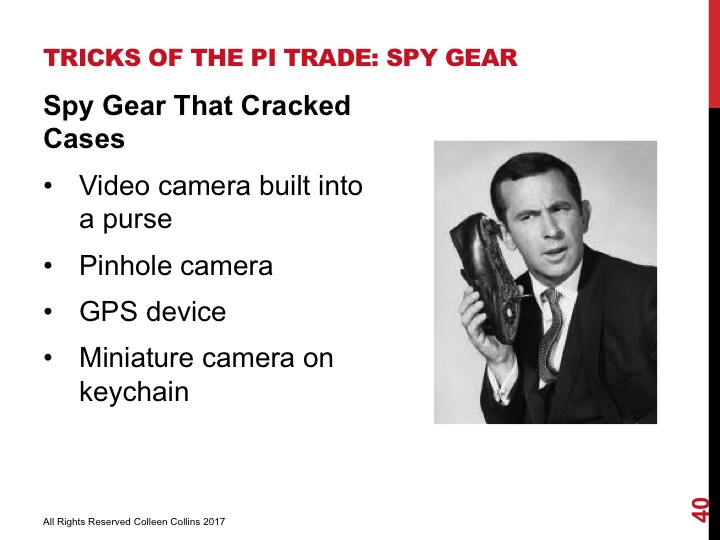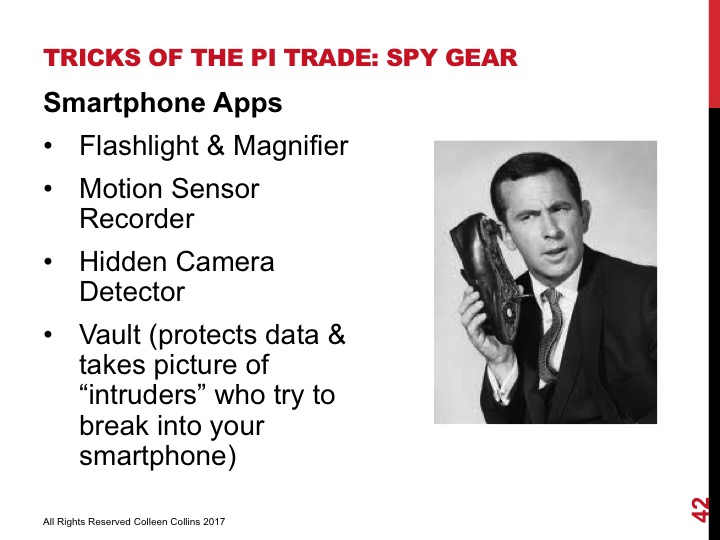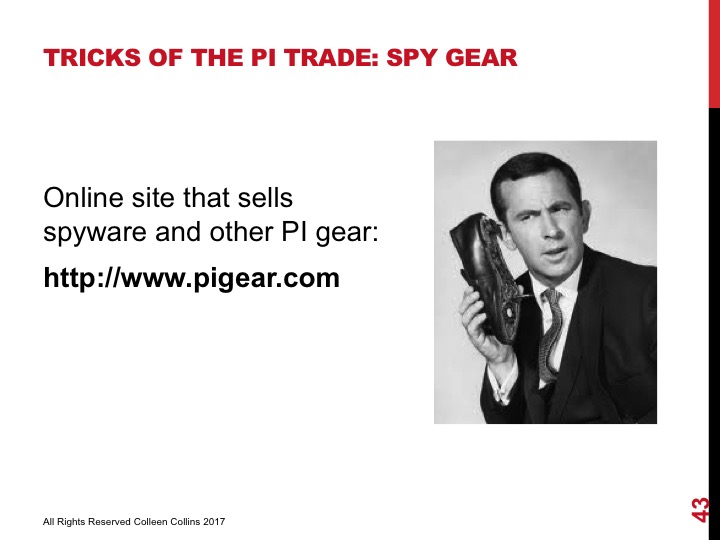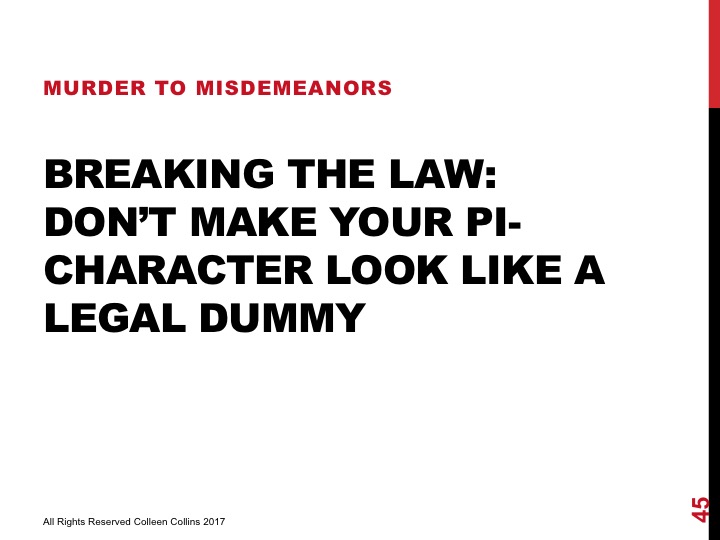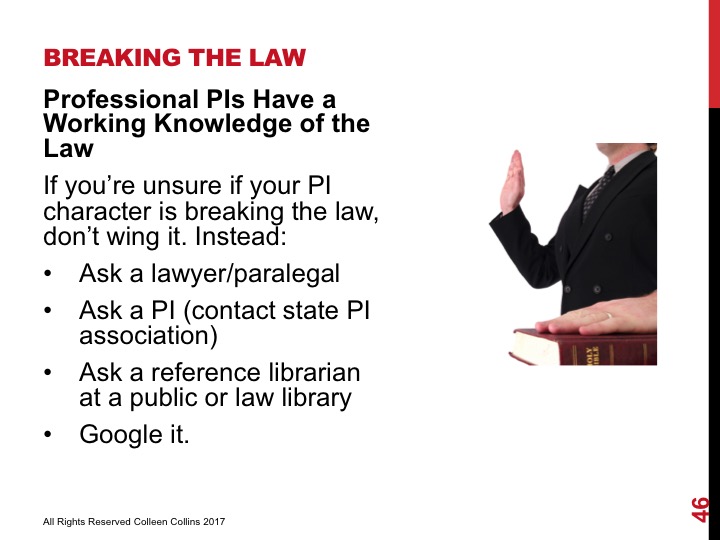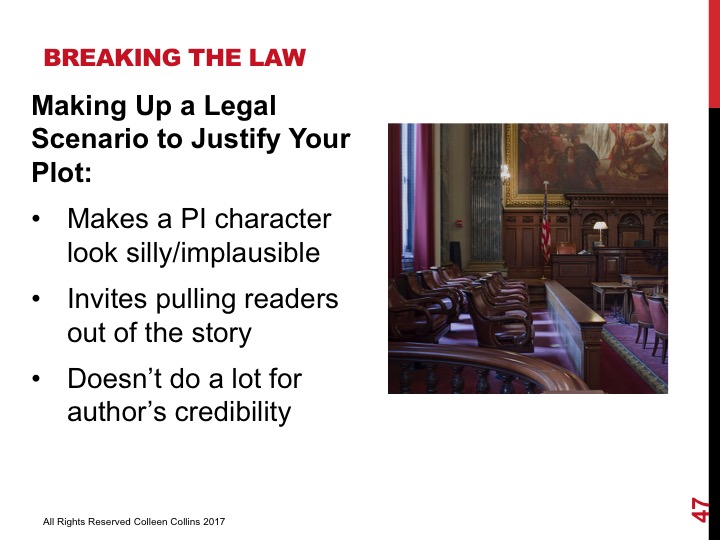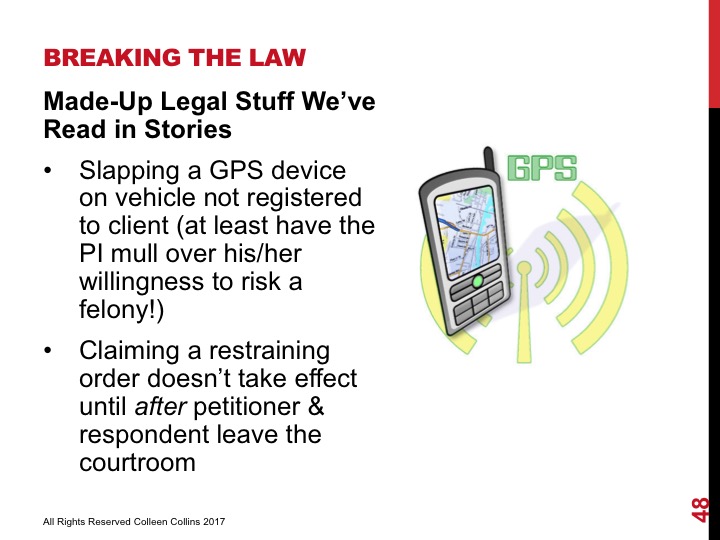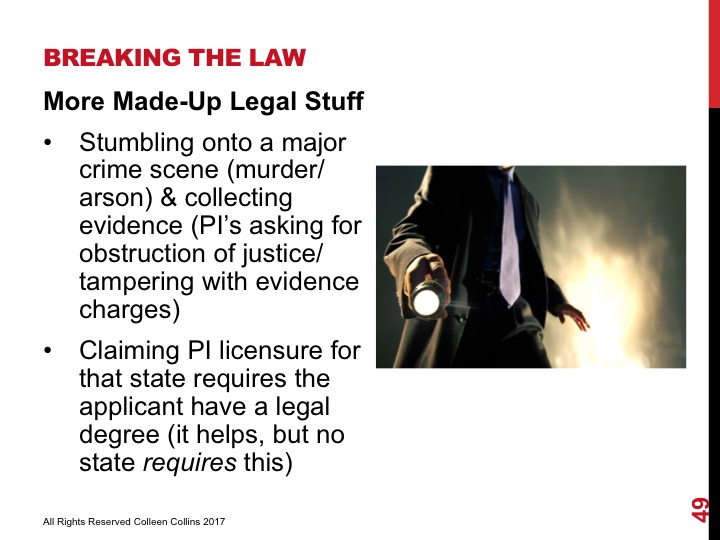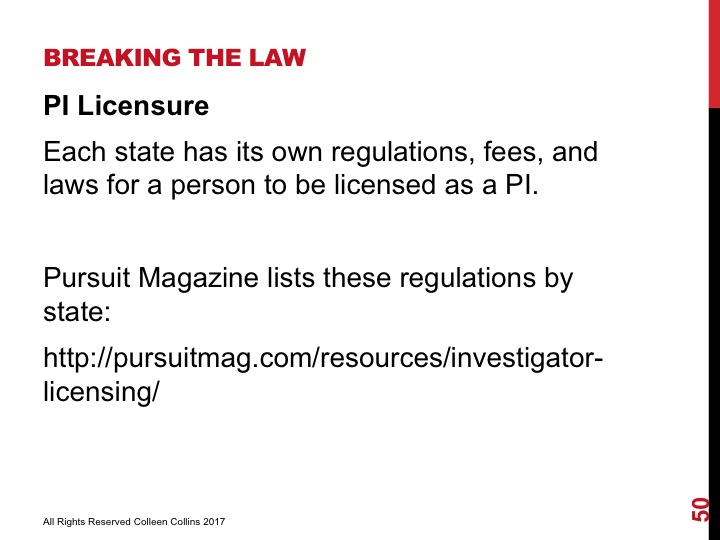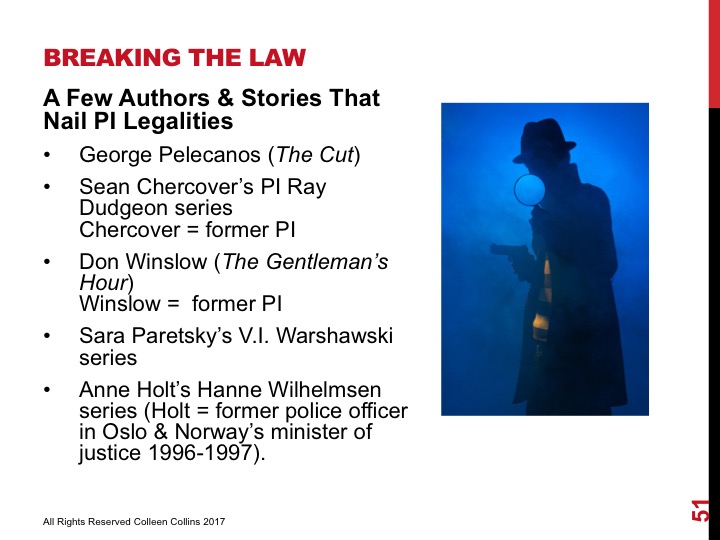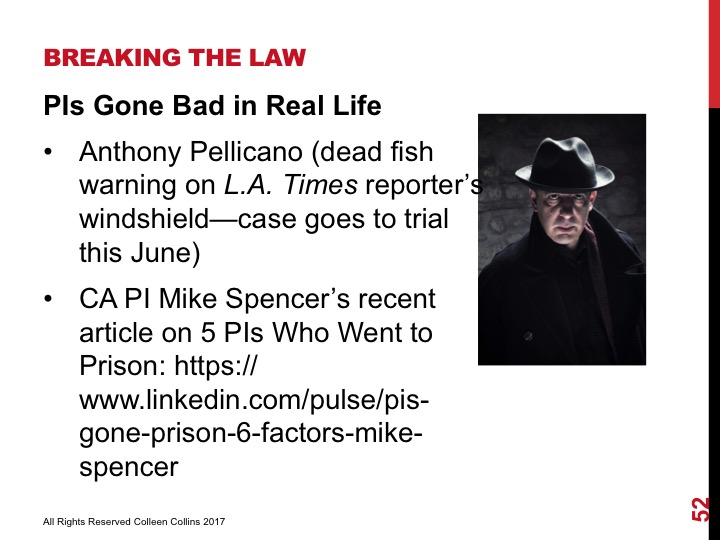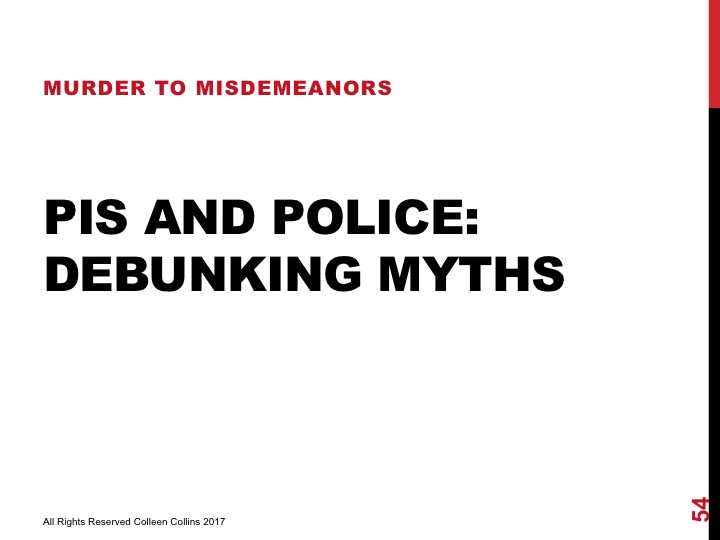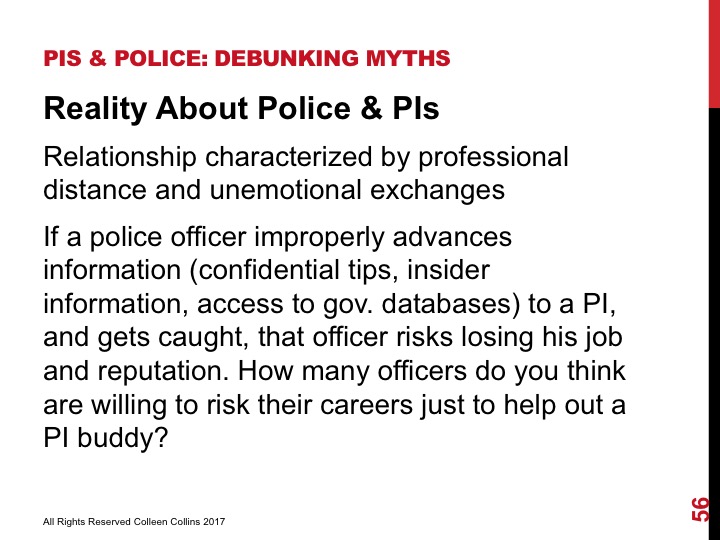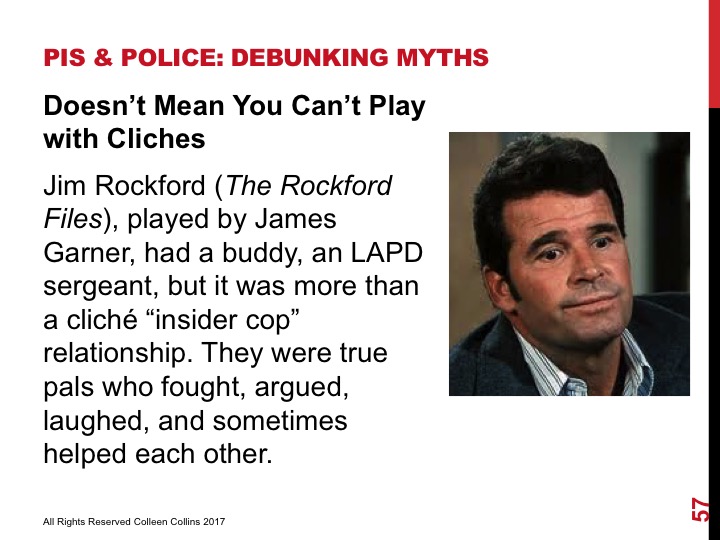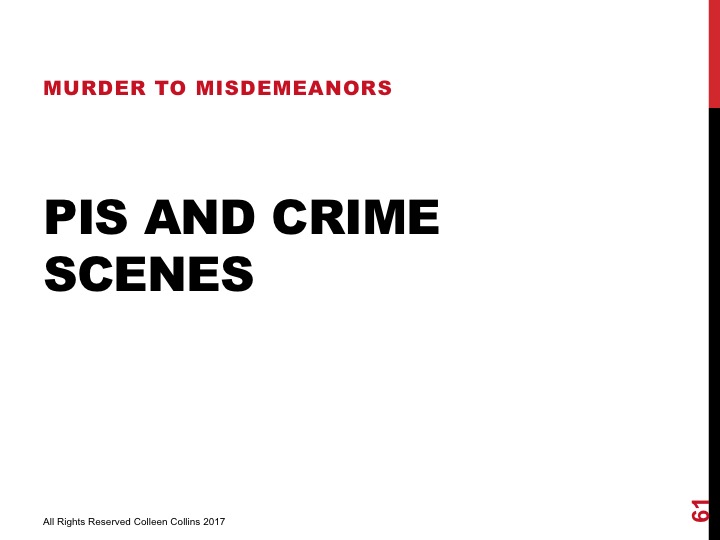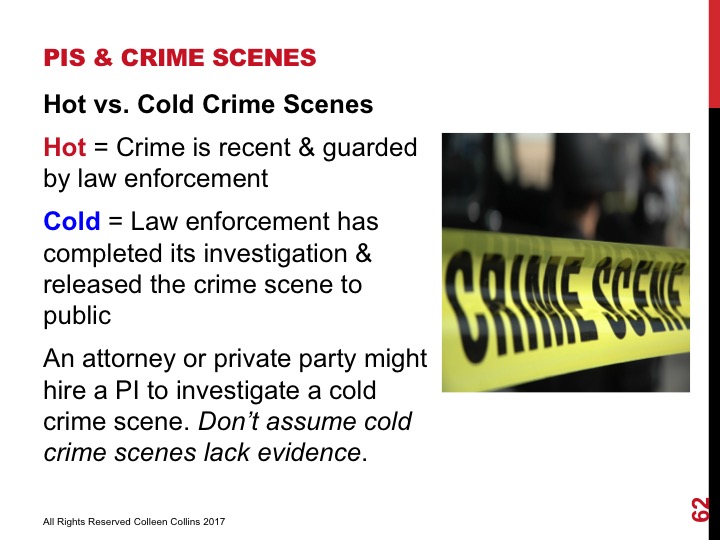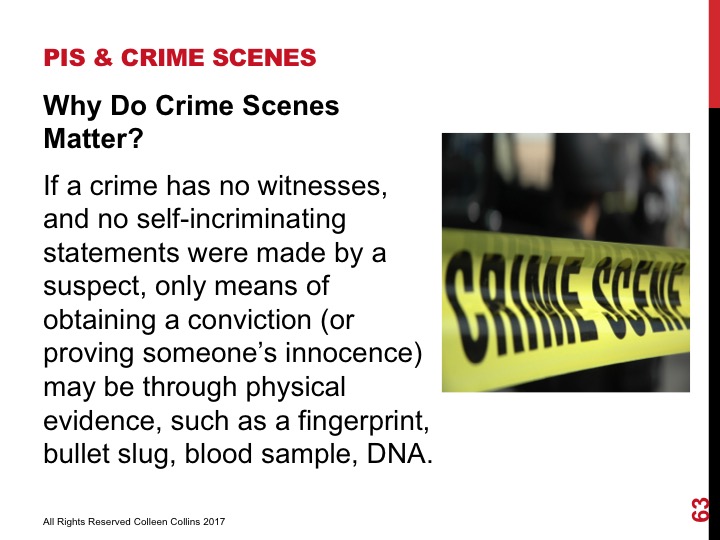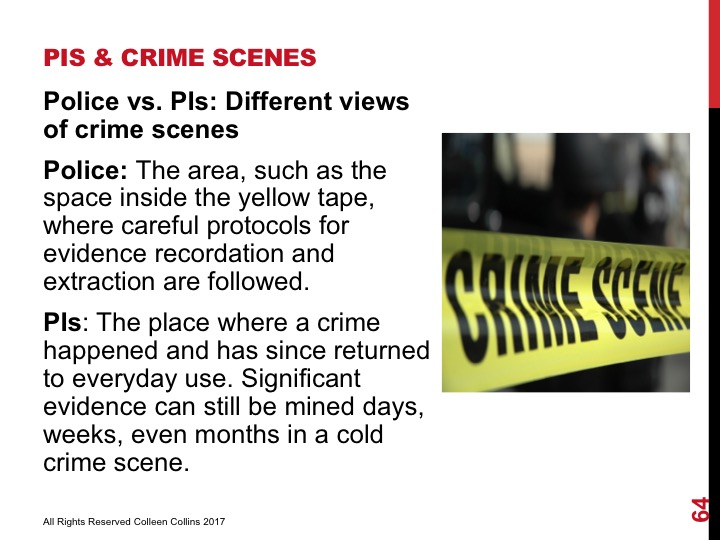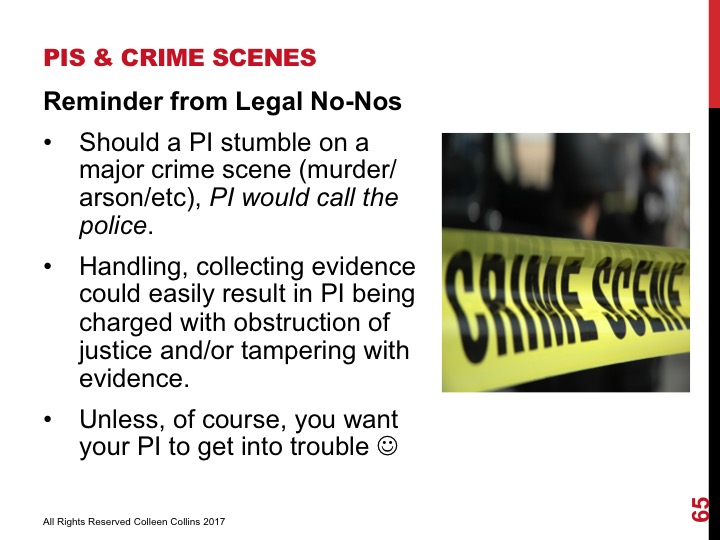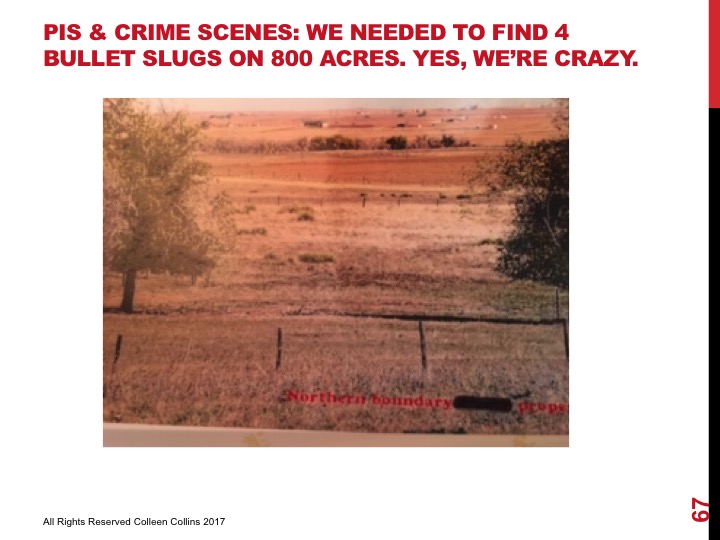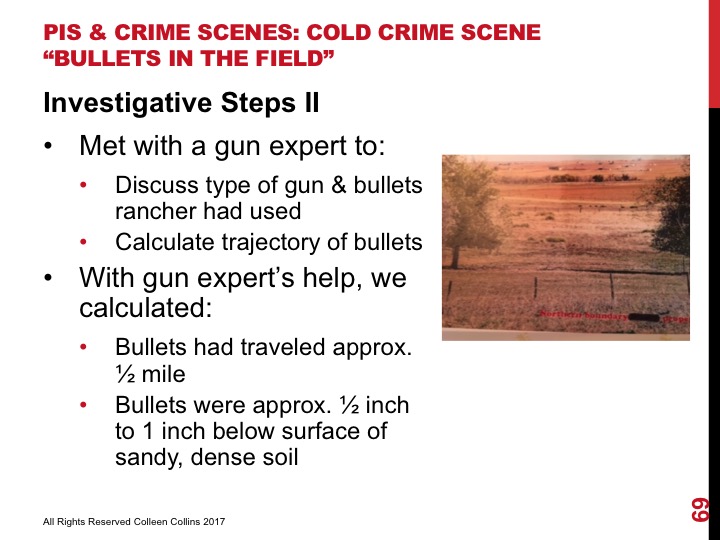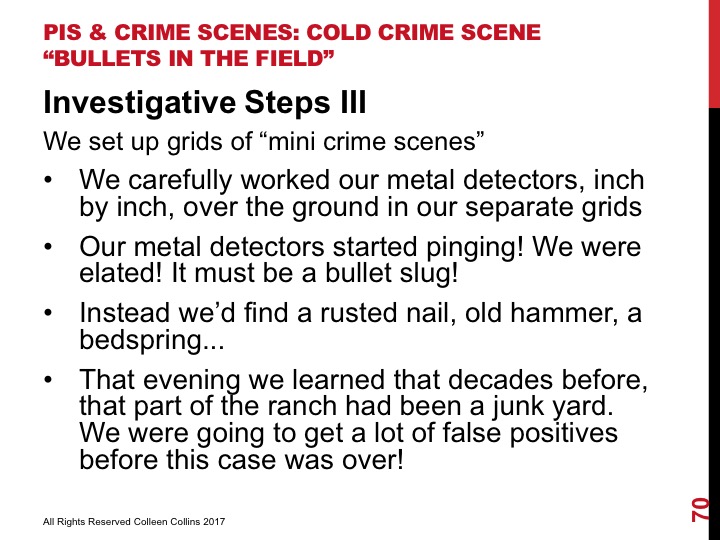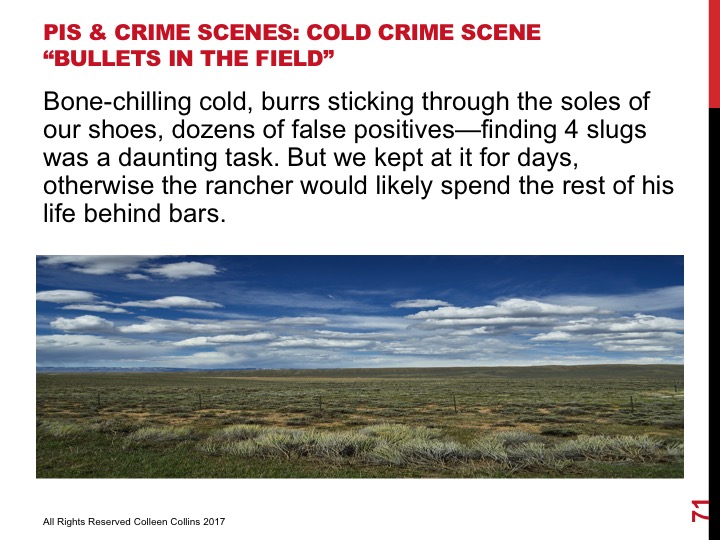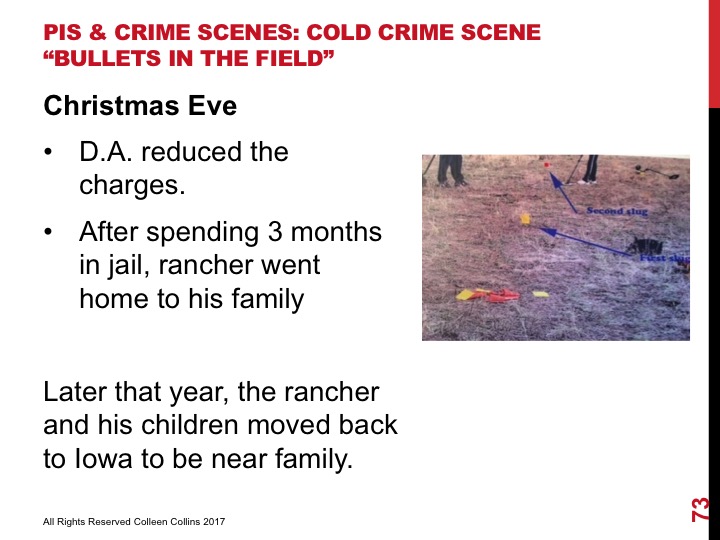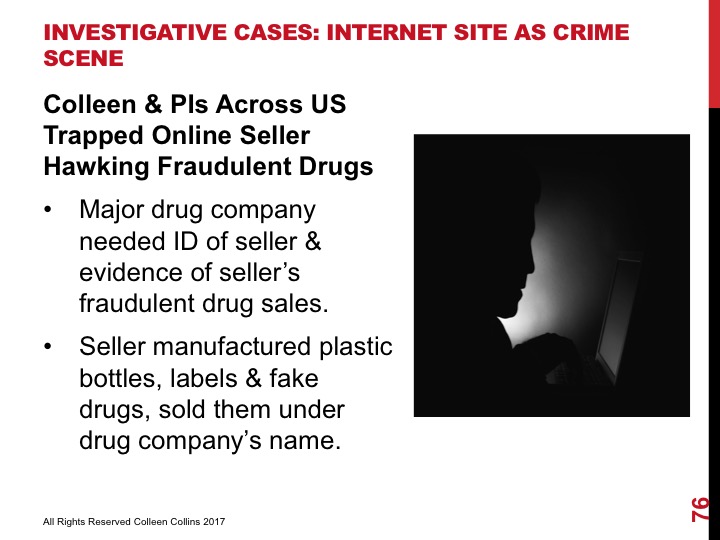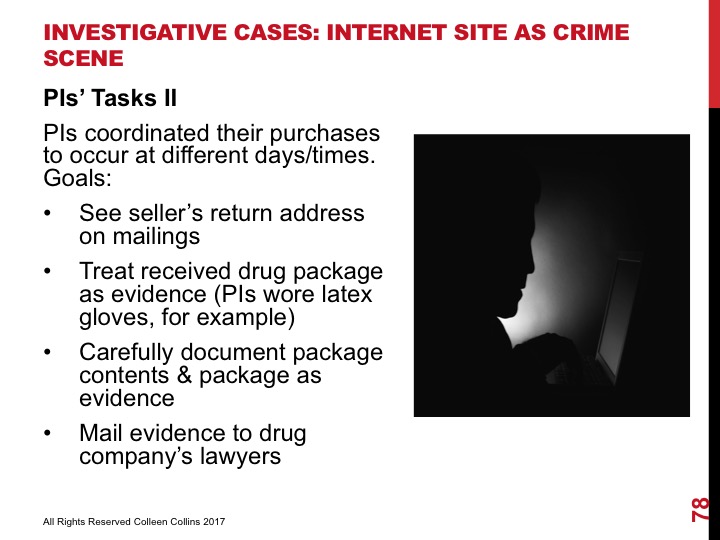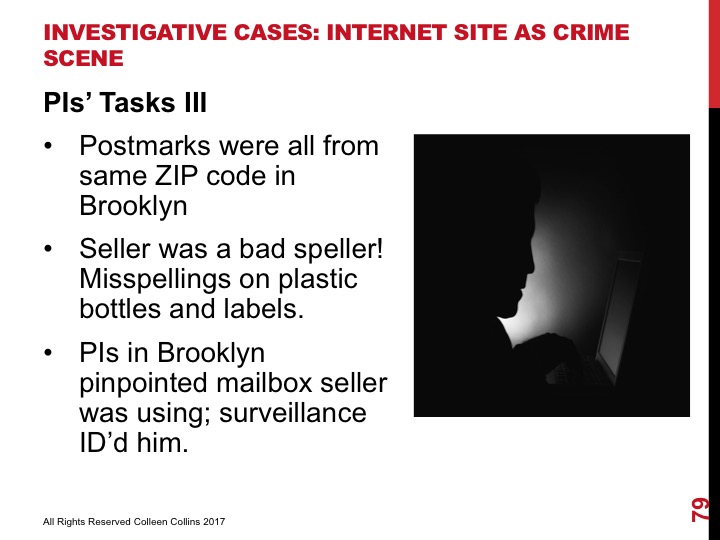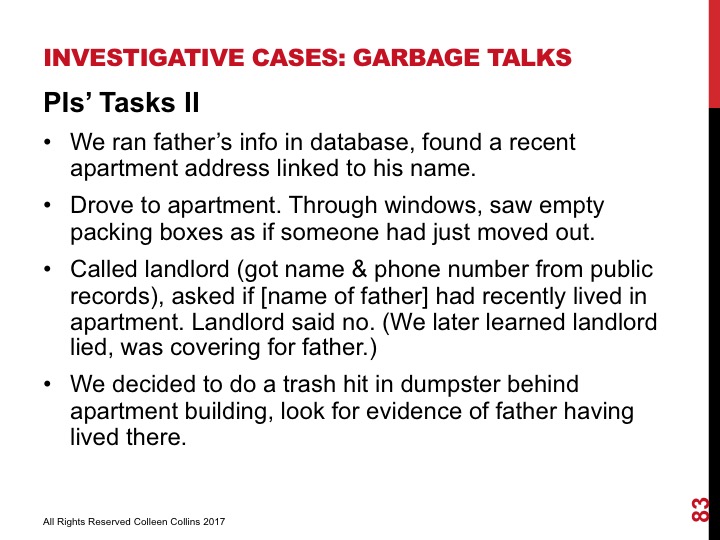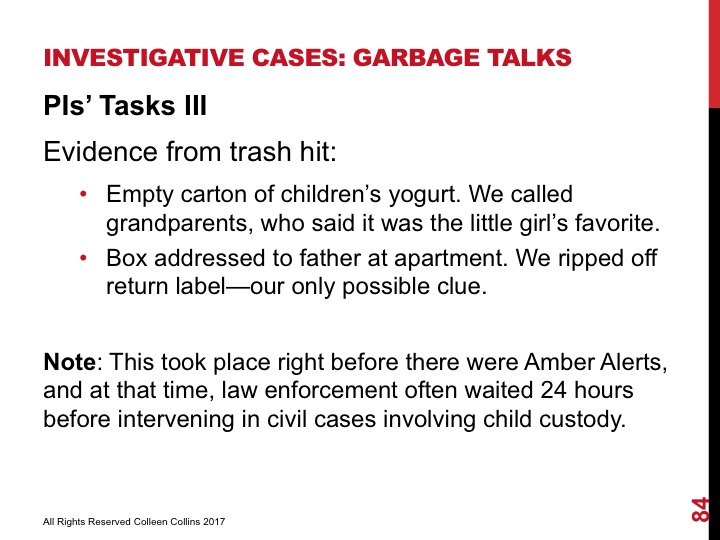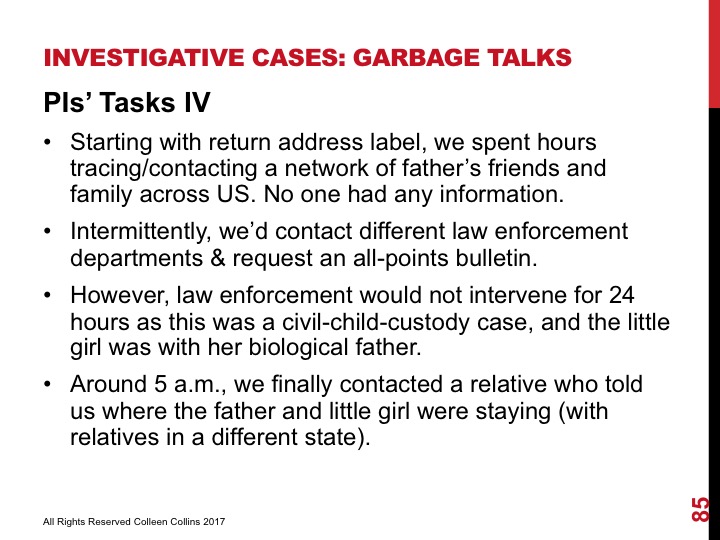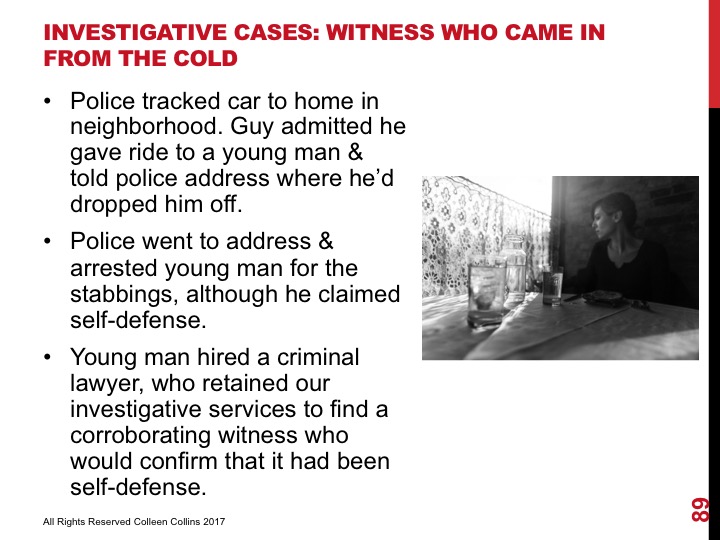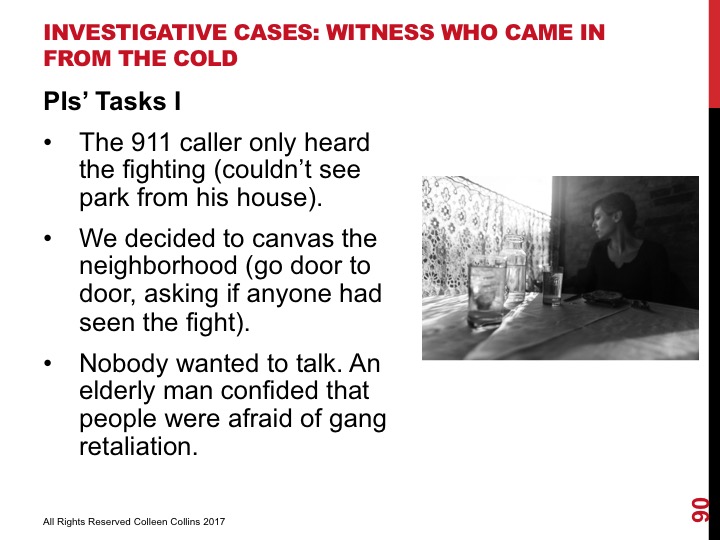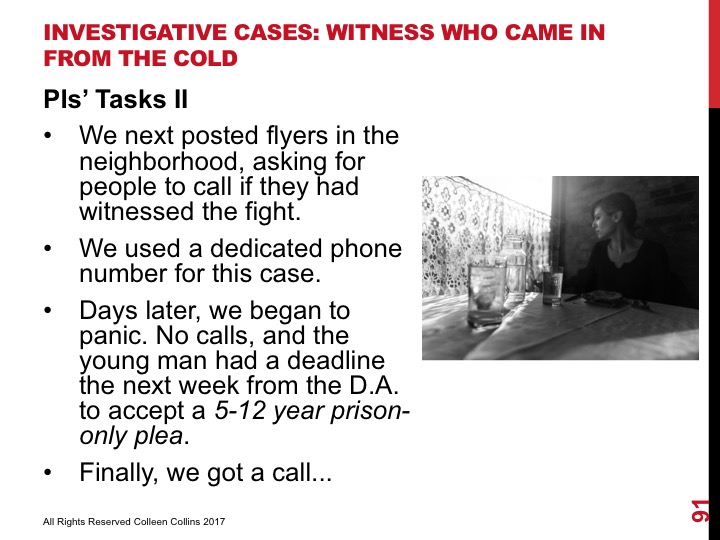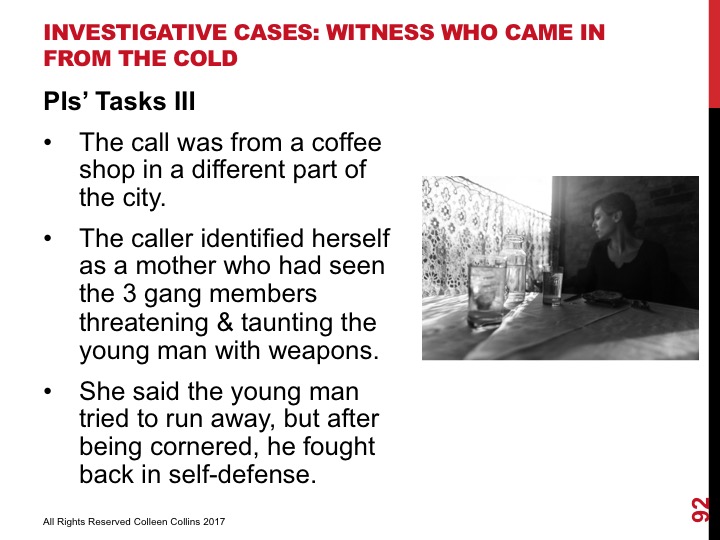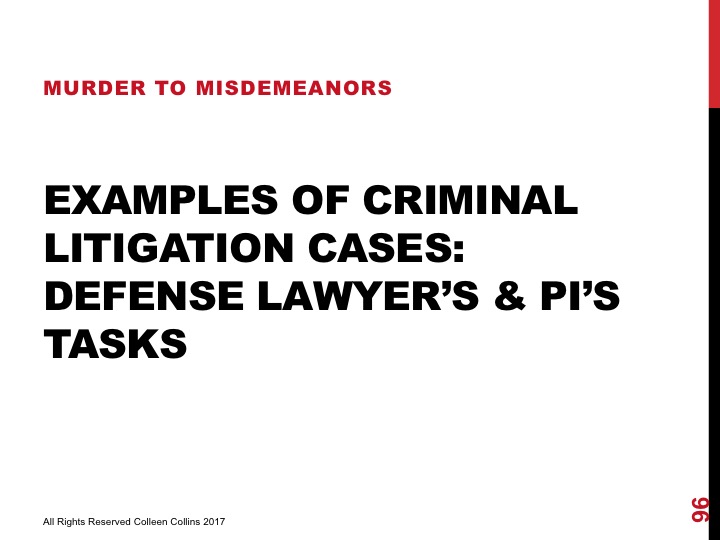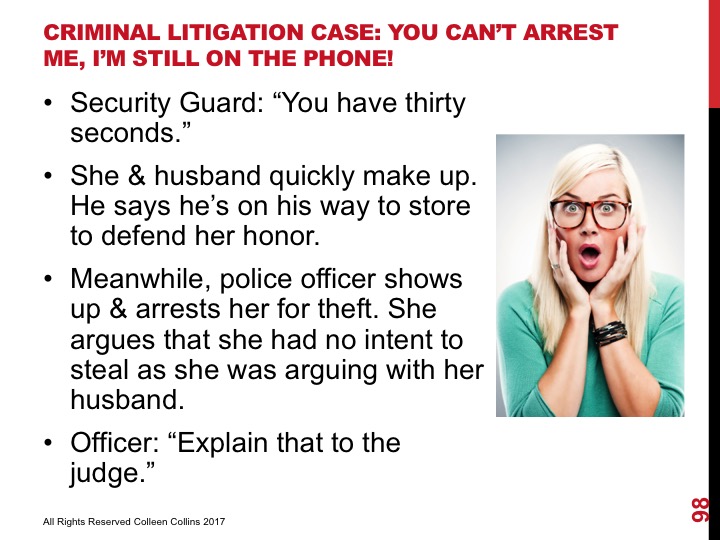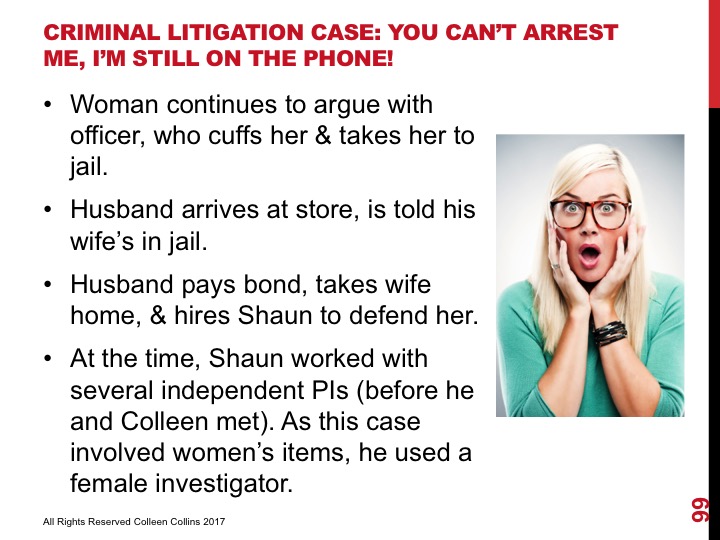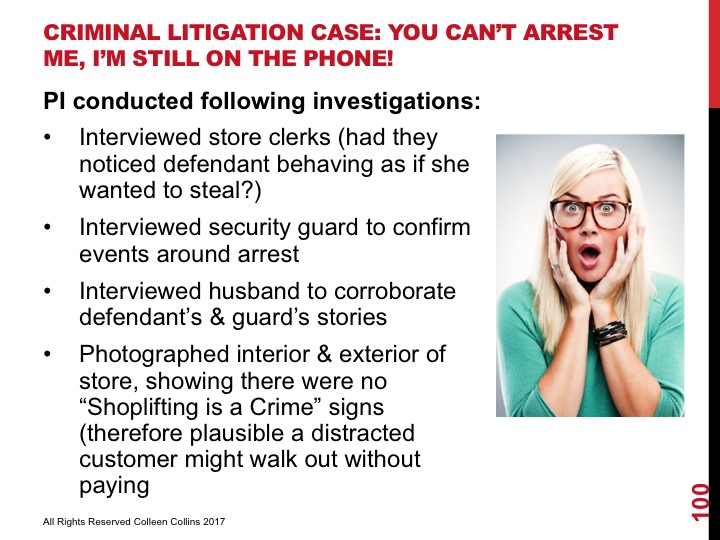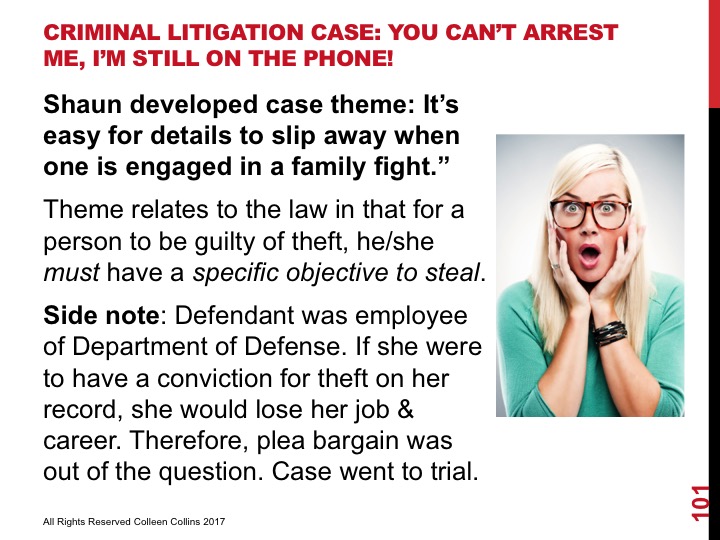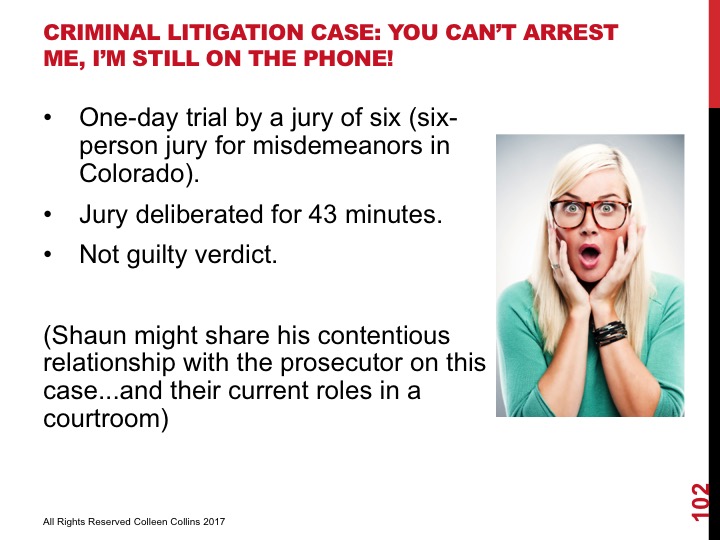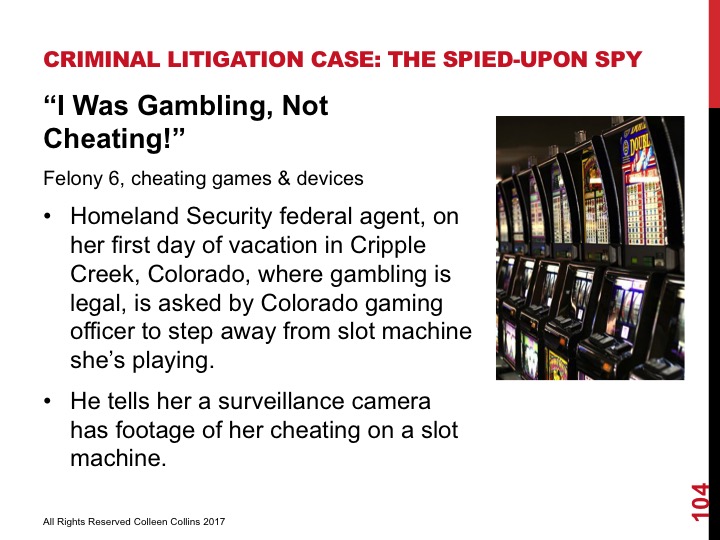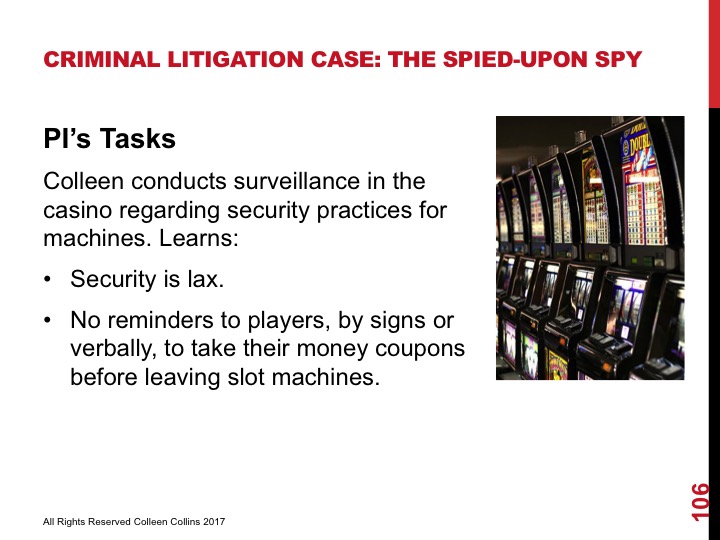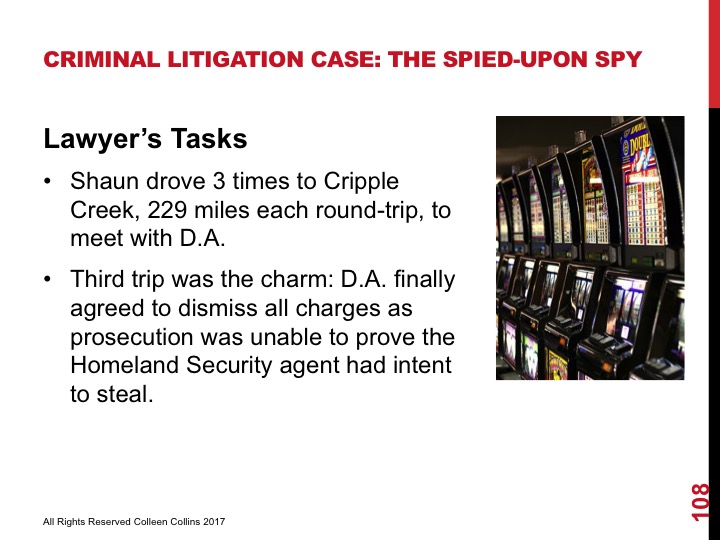Updated April 10, 2018
Welcome to the second part of "Private Investigations and Crime Scene Investigations," based on a series of classes my husband and I taught for Kiss of Death, the mystery-suspense arm of the Romance Writers of America. It's also timely as this past week we returned to investigate a crime scene for an attempted homicide charge that involved multiple vehicles. The incident occurred several months ago, yet we found physical evidence (pieces of broken parts that matched the vehicles involved) in an area not mentioned in the police report.
As explained in the first class, PIs typically investigate crime scenes after law enforcement/others have finished their investigations and re-opened the area, returning it to everyday use.
Now, let's kick off class II with the question...
After Police Have Completed a Crime Scene Investigation, What Might a PI Do?
A PI might be called on to visit, photograph and document a crime scene after the police have processed the crime scene. During this visit, the PI might look for evidence not found/collected by the police in their work-up. Your fictional PI could easily be at the scene to look for “things not done” by the police, which is a fruitful area for defense lawyers in criminal cases to exploit when critiquing the government’s case in trial.
Tire marks (image in public domain, attribution Robert Kroft)
In one of our experiences, we re-visited the scene of an attempted vehicular assault at least a month after it occurred (btw, this is a different case from the one mentioned above). What evidence did we gather weeks after the event? For starters, the tire marks were still clearly seen on the pavement -- we photographed these marks for the attorney. We also measured the area where a complex set of vehicular maneuvers were alleged to have occurred. Additionally, we videotaped the pattern of vehicular travel at the exact speeds alleged by the police.
When Police Don’t Want to Process a Crime Scene, What Might a PI Be Asked to Do?
There are many instances where the police don’t perform testing or otherwise process an entire crime scene because to do so doesn’t help their side of the case. To be fair, the police may feel that they’ve gathered enough evidence (by perhaps taking witness statements).
In such scenarios, criminal defendants often complain because the police didn’t perform a certain test or search an area. It is an old axiom of criminal law that the police have no duty to gather evidence helpful to an accused. This often results in criminal defense attorneys retaining a PI to perform crime scene testing so as to gather the evidence omitted by the police.
Following up with an example, our agency was once retained to find slugs from bullets fired as warning shots in the general direction of, but not directly at, a couple who claimed they were the victims of attempted first-degree murder (which requires a substantial step toward a deliberate and premeditated homicidal act). If found guilty, our client faced a possible 48-year prison sentence.
According to the accused (our client), the bullets would be located on a portion of his 886-acre ranch where it would have been impossible for him to aim at the “victims” and have the slugs land. As the sheriff's office had done a cursory, on-foot search of the ranch land for these four .357 slugs, we decided to do a more in-depth search, using metal detectors. By the way, the sheriff’s office did not own a metal detector.
Meanwhile, our client was being held in a local jail in lieu of $300,000 bail.
Using our client’s characterization of the trajectory of the bullets and factoring in the nature of the load, we were able to map out a possible area approximately a half-mile from where the incident occurred. Braving cold winds, an unusually large amount of scrap metal in the ground (which kept setting off the metal detectors), and burrs that came up through the soles of our shoes, we burned approximately 24 man hours before locating the four slugs.
The first slug we found
When we found that first slug, we whooped and hollered like a couple of miners who'd just hit gold. Our client's mother, who was staying at the ranch to watch over her grandkids, heard our yells and came running across the fields to us, crying as she knew our happy yells could only mean one thing: We had found the evidence that proved her son was innocent.
After the slugs were found, we carefully photographed the site. The slugs were then shipped in evidence bags to the police, where ballistic experts matched the slugs to the firearm seized from our client on the night he was arrested.
In this example, because of the evidence obtained by PIs (several months after law enforcement had finished processing the crime scene) the D.A. reduced the charges and our client was released (on Christmas Eve, after spending over three months in jail). You can imagine how meaningful that Christmas was for his family.
Postscript: A few months later, the rancher called, said he'd like to do something special for us. He visited our home and checked our roof, water heater and fence, looking for something to repair. There wasn't anything that needing fixing, but the visit was a heartwarming reunion. Soon after, he sold his ranch and moved back to his hometown in another state so he and his kids could be near the rest of their family.
This wraps up class 2.
In the next class we cover the basics of homicide investigations, from key tasks covered by law enforcement, to an overview on estimating time of death, to how a PI might be called upon to aid in a homicide investigation. We also describe a case when a criminal defense lawyer retained us to investigate a former homicide scene, and what we learned.
All rights reserved by Colleen Collins. Any use of this content requires specific, written authority.












